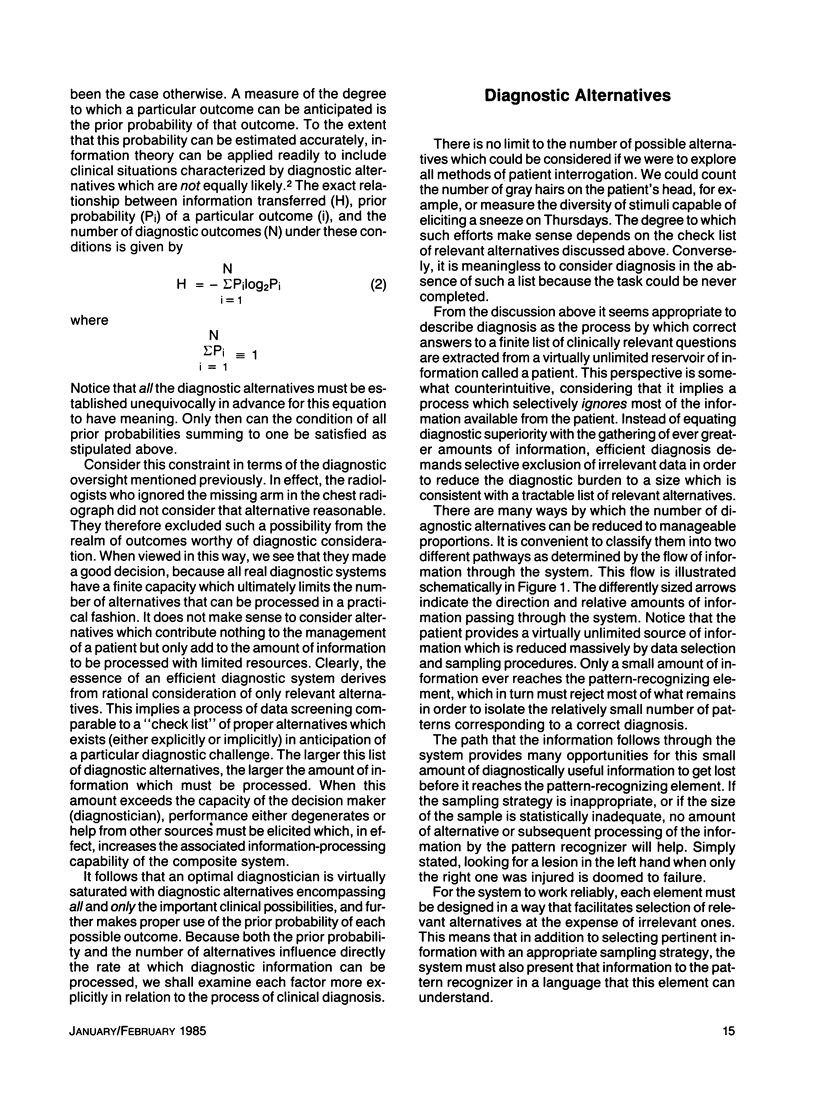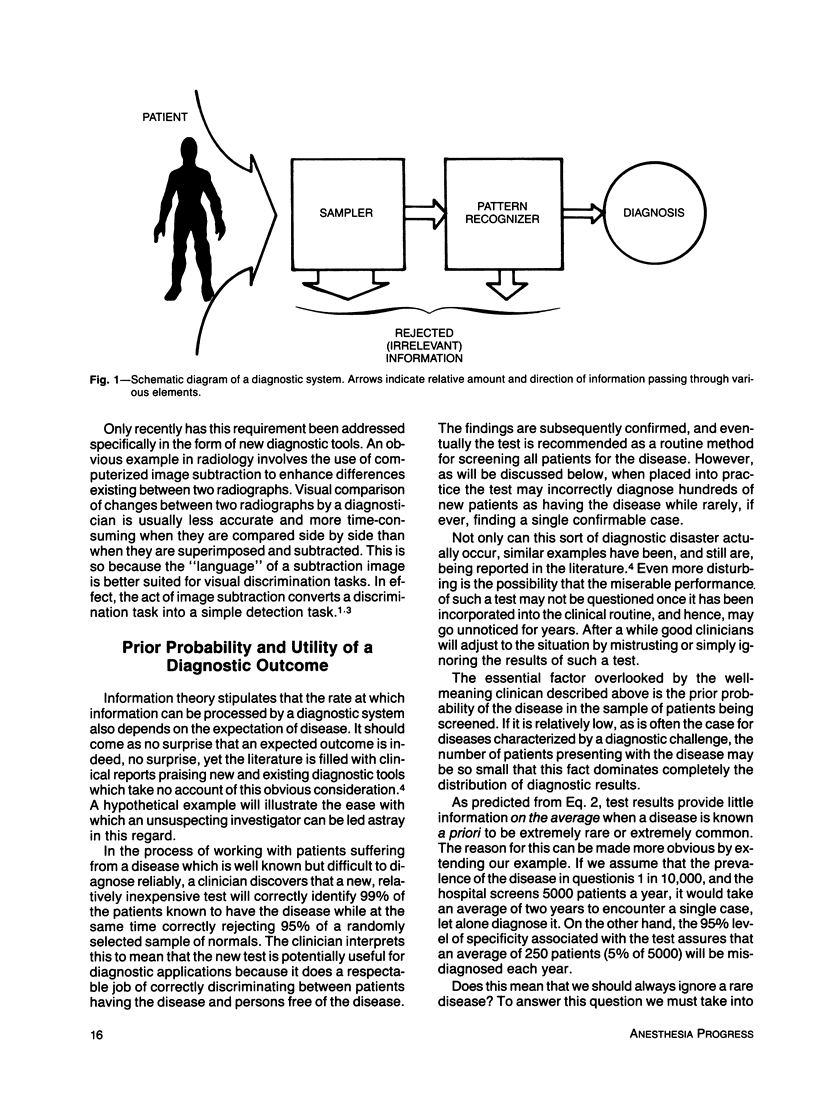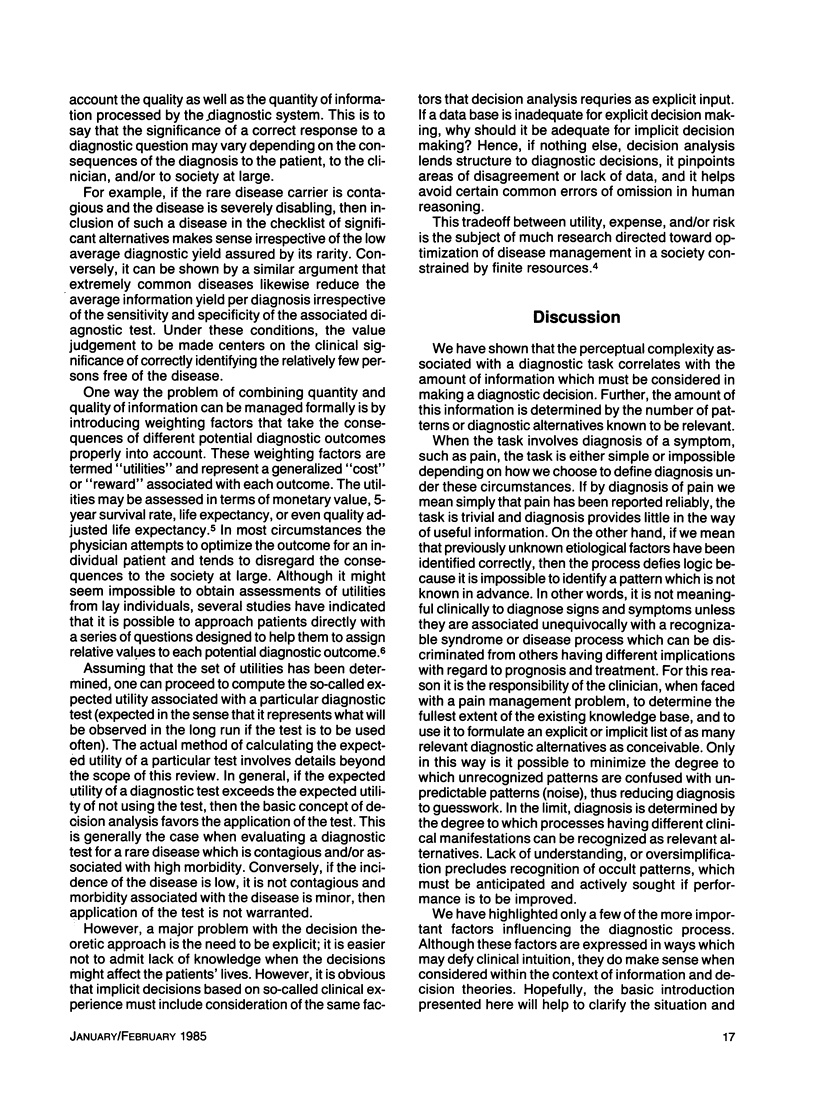Abstract
Pain may be considered a diagnostic alarm that acknowledges but usually fails to determine the etiology of a particular clinical problem. Diagnosis thus involves the extraction of additional information from a patient in order to determine rational bases for treatment. The process is ill-defined and fraught with error unless the diagnostician is aware of all and only the relevant diagnostic alternatives. This list of alternatives plus an appreciation of the likelihood of each possible diagnostic outcome determines the fastest rate that diagnostic information can be processed by any system in the absence of unpredictable events called noise. Human diagnosticians must be fluent in the “language” used to convey the desired information if performance is to be optimized. In general this involves restructuring the diagnostic task into smaller pieces which are easier to digest perceptually. One way to accomplish this is to ignore or eliminate patterns which are either irrelevant or occur so rarely (or so commonly) that they usually have negligible impact on diagnostic performance. The utility of a diagnosis is determined ultimately by the degree to which it influences the health and well-being of both the patient and society at large. Hence, the consequence of a particular disease may offset the low diagnostic yield per examination resulting from a low or high prevalence of the disease. When diagnostic patterns are limited by ignorance to only signs and/or symptoms such as pain, the diagnostic process loses its meaning and treatment decisions are compromised necessarily by uncertainty.
Full text
PDF





Selected References
These references are in PubMed. This may not be the complete list of references from this article.
- McNeil B. J., Keller E., Adelstein S. J. Primer on certain elements of medical decision making. N Engl J Med. 1975 Jul 31;293(5):211–215. doi: 10.1056/NEJM197507312930501. [DOI] [PubMed] [Google Scholar]
- Pauker S. P., Pauker S. G. Prenatal diagnosis: a directive approach to genetic counseling using decision analysis. Yale J Biol Med. 1977 May-Jun;50(3):275–289. [PMC free article] [PubMed] [Google Scholar]


